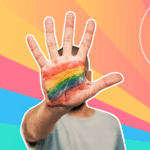By Asha Shivaji, CEO and Co-Founder SeeMe Index
While Super Bowl ads have long been criticized for lacking diversity, this year we saw a shift – a powerful glimpse into what advertising looks like when inclusivity is truly embraced. From celebrating women over 45 like Meg Ryan and Shania Twain, to showcasing a realistic range of body types and skin tones, brands are beginning to tap into the diverse voices that reflect our society. But let’s be clear: this is just the beginning. True representation is not a trend, and if brands are serious about pushing boundaries, they need to keep raising the bar. Progress is happening, but the real work lies in ensuring these diverse voices are here to stay, not just for a Super Bowl moment.
The Gender Conversation
The biggest shift we saw in 2025 was the inclusion of 45+ female talent. From Meg Ryan (Hellmann’s), to Shania Twain (Nestle Coffee Mate) and Catherine O’Hara (Michelob Ultra) — women with real-life experience and undeniable charm, were celebrated. And Martha Stewart for Uber Eats AND Skechers proves that age is just a number!
We saw strong representation of younger female talent of color, as well. Female celebrities like Doja Cat (Taco Bell), Hailee Steinfeld (Novartis), Becky G (Mountain Dew), Issa Rae (TurboTax), Sha’Carri Richardson and Jordan Chiles reflected a range of black and Latina talent. Hailee Steinfeld who is part Filipino also stood out as one of the few Asian Americans in this year’s ads.
However, men, particularly white men, continued to dominate. We saw a lot of familiar faces like Chris Pratt, Chris Hemsworth and Glen Powell and less leading men of color with Snoop Dogg, Ludacris and Shaboozey as notable exceptions.
Did the Game Improve on Inclusivity?
While gender and race/ethnicity are often the identity dimensions most focused on when it comes to inclusion, we did see some great strides in other lesser seen identity dimensions like body size. The Hims & Hers ad featured a range of talent with large body sizes which is rarely seen in advertising and Super Bowl advertising alike.
When it comes to disability, there appeared to be less representation than in past years with the only commercials that included people with disabilities being Hims & Hers, The NFL, Pfizer and “He Gets Us.”
In terms of sexual orientation, there were 2x as many LGBTQ+ identifying actors in this year’s ads; Wanda Sykes (Novartis), Michelle Rodriguez (Häagen-Dazs), Jake Shane (Poppi) and Dan Levy (Homes.com). A great upward trend but there is still much room to improve.
The SuperBowl is the biggest moment for the ad industry so it’s great to see the strides in stronger representation of women 45+, women of color, people with large bodies and people from the LGBTQ+ community but there’s still a long way to go to achieve parity in diversity and representation in advertising and this matters because more inclusive advertising is proven to drive more short and long term sales. So brands should do it not just for the SuperBowl or the moral imperative, but for the business imperative too.








